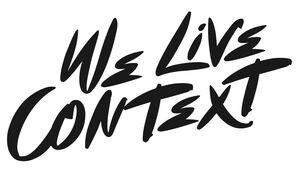Flexibility vs fatigue: Our love-hate relationship with Zoom

Take a look at your schedule. How much of it is swallowed by Zoom or Teams meetings? A client once shared her screen to show us what ‘back-to-back’ really meant. It was relentless. No time for a break, let alone deep thinking. Another described ‘barcode days’ – a diary packed with 30-minute meeting slots, slivers of time one after another. The work was the Zoom. Real work got pushed to the margins.
Research backs this up: Atlassian found meetings are the number one productivity killer, with 78% of employees saying they attend too many and 51% reporting overtime due to meeting overload. As one client put it, “It makes the day longer, especially in a global role.”
This is a far cry from the promise of our post-pandemic move to flexibility. For those in the research industry, video conferencing platforms promised a revolution – access to clients anywhere, debriefs to geographically dispersed big teams who might not be able to gather synchronously, more touchpoints with clients during briefing and the project itself.
But five years after the first lockdown, we need to ask: have we really benefited? Or have we simply defaulted to video out of habit, sleepwalking into a culture of endless calls?
For many, it’s been overwhelmingly positive. Video platforms transformed work into a more inclusive space. Those who might have been excluded from traditional cultures of long hours and presenteeism – those with disabilities, those who have experienced micro-aggressions in the workplace, neurodiverse workers – can participate more easily. Zoom can also level the playing field. Everyone, from intern to chief executive, gets the same screen real estate. “No one sits at the head of the table,” says Lenina Lotufo, Walkers insights manager. “Everyone is valued and everyone has a voice.”
For some, it’s life-changing. “As someone with a disability, not having to travel is a big plus,” says Steven Lacey of The Outsiders. “On Zoom, people don’t see my disability – they just see a middle aged white man, which might make them listen to me more as an authority.”
Yet power dynamics can persist. Laura Barber, global insights director, warns of the ‘creep effect’: “The most senior person often speaks last, setting the tone and owning the narrative. Equal screen space doesn’t mean equal impact.”
The lack of a commute also frees up valuable time. This can be particularly helpful to those with caring responsibilities, including parents who are constantly wrangling the mental load ticker tape at home (and, as research from Melinda Gates shows, women on average spend seven more years doing ‘unpaid’, unrecognised, under-valued household chores than men over their lifetimes). All in all, we should benefit from more conversations; less wasted time – a good thing in our pro-solitude culture.
“Five years after the first lockdown, have we defaulted to video out of habit, sleepwalking into a culture of endless calls?”
Zoom allows for more frequent check-ins, which can strengthen client/agency relationships. “A one-to-one can be personal. You’re in each other’s homes. It’s informal. The right empathetic questions build connection,” Lotufo observes.
But there’s no denying the drawbacks. The first five minutes of a video call can be painfully awkward, filled with forced small talk and hesitant waves. Anniki Sommerville, Good Housekeeping columnist, compares Zoom reactions (thumbs up! party emoji!) to a “sad 90s office party”.
When it comes to creative work, virtual collaboration can also be limiting. A study showed face-to-face collaboration generates 20% more ideas and explores a broader range of solutions than those working remotely. Jonathan Levav, professor of marketing at Stanford Graduate School of Business, discussing the findings of the study, said: “Working on Zoom was a double penalty. Fewer ideas – and a narrower set of ideas.”
Why are we less creative on virtual meetings? We don’t let our eyes and minds wander, which cognitively inhibits us because we are hyper-focused on the screen. It’s not just other people’s faces we stare at; our own expressions start to haunt us. You know if you write the same word too many times, you start to mistrust your own spelling? The same thing happens on a video call, but with your face. You become acutely aware of it. It starts to look odd. You experiment with different facial expressions to convey alert attentiveness. Women, in particular, report higher Zoom fatigue, often due to heightened self-monitoring. Another study found that video calling increased people’s anxiety about being negatively judged by others.
We try to decode people’s expressions; are they bored, frozen, both? Zoom’s ‘face-on-face’ (rather than face-to-face) interaction can feel quite unsettling. The proximity of that many faces in real life would be threatening and confrontational. Is this why we sometimes speak less empathetically and more dismissively on virtual calls?
Some report conversations can feel transactional, draining the human connection essential to research. It’s not just what people say, but how they say it – the small cues that get lost on screen. Multitasking is common, attention drifts, and the impact of insights diminishes.
So, how can we be more intentional about our use of virtual communication?
Three ways to own the Zoom
1. Set the tone
Recognise people may have ‘barcode’ back-to-back meetings. Everyone arrives in to the call with different mindsets – some stressed, some hungry, some excited or nervous. A few minutes of real conversation at the start of a meeting can help everyone shake off their previous meeting and reset. Or instead of small talk, Barber recommends thinking of setting the tone as you would at the start of a workshop – playing some appropriate music to the topic you’re about to delve into, doing an exercise together to get you on the same page.
2. Actual presence – not just being present
You have an ongoing responsibility as a meeting participant. Don't just sit there like a blank statue. In person you would nod, smile, mimic body language. Even if you don't have a point to say, say something like, ‘I am jotting down my questions for later’. The chat function, often overlooked, can be a lifeline for those who feel less comfortable speaking up but still want to contribute.
3. Energy and randomness
Zoom flattens everything – your voice, expressions and presence. Counteract that by dialling up enthusiasm by 20%, slowing down, varying your tone, and using pauses to let key points land. Treat it like storytelling, not reporting.
Sometimes, a little randomness can bring a meeting to life. Add unexpected elements to spark connection and use humour or surprises to break monotony and build relationships. Hattie Bowering from Citizen Global told us about the time she invited a live goat to join her call during Covid. "We were making a feature documentary about Dubai’s Museum of the Future and all the different creative teams were working remotely. It was a friendly group, but everyone was under pressure. The goat was not noticed initially, but when it was, everyone had a good laugh, asking it what it thought about the future."
A Zoom Charter for agencies and clients?
If video platforms are here to stay – and despite ‘return to office’ mandates, all signs say they will continue to feature in a hybrid working world – we need to rethink how we use them so they are less as an obligation and more as a tool for better communication.
We were inspired by the Aura Working Well Together Charter, developed to support better client-agency collaborations. In their discussions with Aura members, the team heard about the importance of open and honest conversations, respecting each other’s time and ways of working and treating partners like an extended part of the team.
These principles can guide us to use Zoom in ways that maximise the benefits and minimise the downsides. Could we even create a specific Zoom Charter to use video platforms thoughtfully and intentionally to improve relationships between clients and agencies?
This advice about how to use video meetings effectively is from the team behind the original WWT Charter, and we welcome any additional input in the comments below.
- Ask your colleagues and partners what works and doesn’t work for them. Don’t just assume, in case you have blind spots or could make a small change that could make a big difference to others
- If you’re inviting others to join you on Zoom, think about how to take care of your side of things well, such as getting to the desired outcomes and managing time spent on the most important topics, or given advance notice of discussion points or information to read in advance – in order to allow your fellow Zoom callers and to do their best on your call
- Respect people’s time and energy by only booking 45 minutes if it doesn’t really need an hour, or starting at quarter past rather than on the hour to allow for a break.
Annie Auerbach and Adam Chmielowski are co founders of Starling

We hope you enjoyed this article.
Research Live is published by MRS.
The Market Research Society (MRS) exists to promote and protect the research sector, showcasing how research delivers impact for businesses and government.
Members of MRS enjoy many benefits including tailoured policy guidance, discounts on training and conferences, and access to member-only content.
For example, there's an archive of winning case studies from over a decade of MRS Awards.
Find out more about the benefits of joining MRS here.















0 Comments